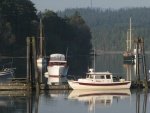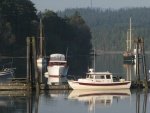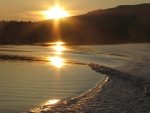I don't know the regulations for Canadian Coast Guard Inspection. I have been told their regulations for captaining a boat are not as stringent as the US Coast Guard's, especially with respect to 12 passenger or fewer vessels.
In the US, boats with a passenger rating beyond an "uninspected vessel" (generally called a 6-Pac, due to the OUPV (Operator of an Uninspected Passenger Vessel) captain license, allowing no more than 6 passengers. Our boats have an annual Coast Guard Inspection. There are different requirements for "open water" and "protected water" vessels. The boats the company I work for are considered small passenger vessels - less than 100 tons. The inspections are extensive. I have been through these with each of the companies I have worked for. Periodically, the boats have to be inspected out of the water, as well. The inspections are extensive, and include practical testing with crew on the water.
Any structural change(s) require a new COI (Certificate of Inspection), which means another inspection and a stability test. The number of allowable passengers and crew will be determined after that test. The stability tests are done by moving sandbags to determine the amount of heel; estimates for anticipated water conditions are calculated. Seating is also considered.
My assumption is that Canadian vessels must have similar inspections, but (again) I am not familiar with their process.
Beyond the Coast Guard inspection/testing/licensing, captains operating around wildlife must know the federal, state, and local regulations concerning operating distances and speeds around various wildlife and protected shorelines. In US waters, I see NOAA and WDFW enforcement vessels almost daily; operating in Canadian waters, it is rare to see an enforcement vessel. That is an observation, nothing else implied. The viewing distances are different in Canadian waters.
We also have company policies that we have to follow, around wildlife, other boats, and shorelines/rocks/water depths. Those are not industry-wide, but are in place for safety and respectful viewing that our captains are required to adhere to.
The PNW offers amazing variety on the water. People come from all over the world to take the different wildlife tours. Our company does extensive safety training, beyond what is required. First mates/naturalists are required to take part in all crew training. The responsibility is not taken lightly; safe operation is a part of every decision/move made at the helm. It doesn't matter how many times one has covered the same water - every trip is different. You can't get complacent.
Jim



